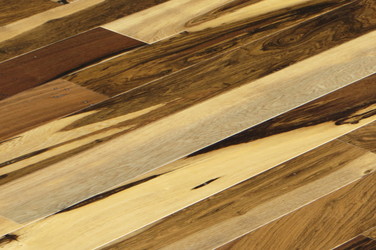South American exotic hardwood flooring is trending back into high-end homes, but is it worth the extra cost? What sets Brazilian hardwood apart from imported woods from other regions around the globe? Here is a quick guide to Brazilian hardwood that will help you decide.
Imported or Domestic?
Brazil is home to one of the largest forests in the world, therefore, the number of hardwood species is abundant. The density ranks amongst the highest of wood species which increases the impact durability. Domestic woods such as oak, maple, and birch are often compared to the Janka hardness ratings of South American exotics such as Jatoba, Ipe, and Cumaru, for instance. While these domestics do not measure up in terms of hardness, that is simply one single factor that determines the durability of flooring.
Environmental Impact
You might think you are contributing to illegal logging practices by purchasing Brazilian wood. However, the vast majority of imported wood from Brazil is harvested legally following the forestry standards of the governing body. To take it one step further, look for certifications from the Forest Stewardship Council and Lacey Act which works in full compliance with the rules of the United States legislation for protecting the forest and bans the use of illegally sourced woods.
Cost
South American exotics can come at a higher cost depending on the source and brand. Some species carry a premium price tag due to the limited availability of raw materials. Once it is milled, it then has to be shipped a great distance. All of this will increase the cost to the consumer. One may want to consider the non-monetary costs as well. Labor laws in Brazil tend to favor the employer, therefore, workers might be more prone to being exploited and forced to work in poor work conditions. However, it should be noted that standards are changing and many brands that deal with North American markets are improving their working conditions.
Solid or Engineered?
It used to be that solid hardwood was undoubtedly the better option. However, advances in technology have made this question more difficult in recent years. Engineering uses less hardwood than solid. The top layer is wood, and the rest is commonly made up of plywood composite. This means that engineered wood is more sustainable than its solid counterpart and if given a thick top layer 3mm+ the engineered can also be refinished.
As you can see, Brazilian hardwood is a great choice for your new flooring project. Just be sure to weigh all of the pros and cons to make certain that it is right for you.
Since 2003, Unique Wood Floors has served home and business owners in Minneapolis / St. Paul. Contact our company online or by phone, or visit one of our two Twin Cities showrooms in Bloomington & Hopkins. We are looking forward to hearing from you!
Want to know what the species in the image is? Take a look here.

